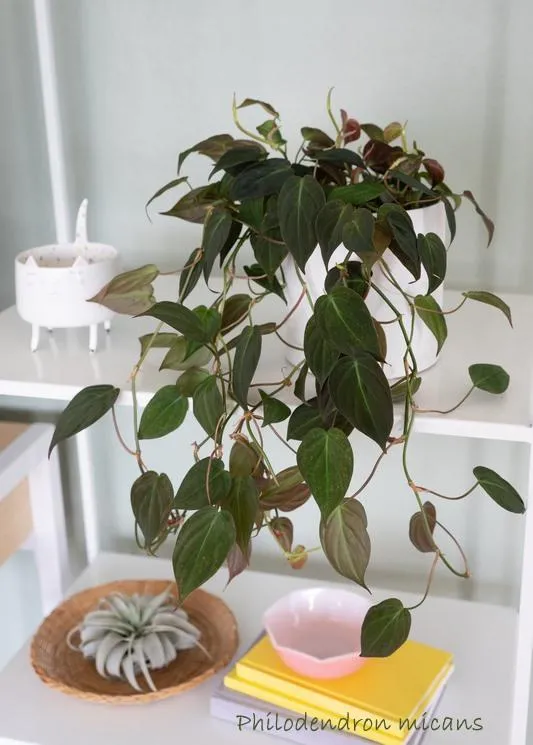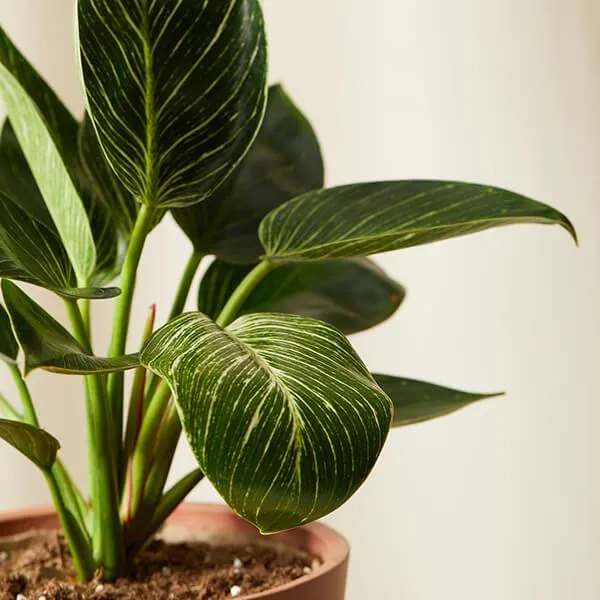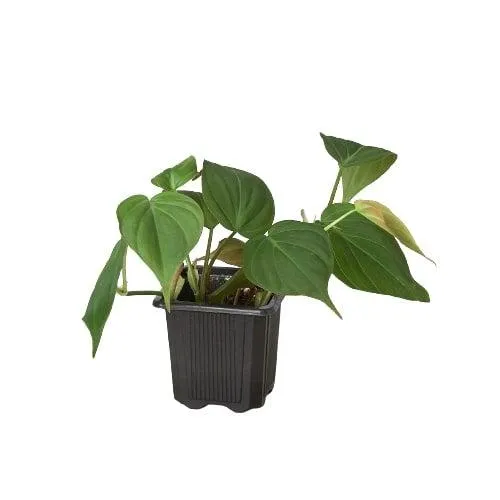An Introduction to the Many Varieties of Velvet Philodendron
If you’re searching for information on velvet philodendron types, you’ve come to the right place. As an avid houseplant enthusiast, I’ve cared for several velvet philodendron varieties over the years and learned a lot about their different characteristics. In this article, I’ll provide an overview of the most common velvet philodendron species and cultivars to help you choose the right one for your needs.
Velvet Leaf Philodendron
- Philodendron hederaceum
The velvet leaf philodendron, also known as the common velvet-leaf or fiddle-leaf philodendron, is arguably the most widely available type. As the name suggests, its leaves have a distinctive velvety texture and dark green color on the top surface. From my experience, this variety thrives in medium to low light and tolerates a wide range of temperatures. It can grow up to 10 feet tall given room to climb but works well as a bushy houseplant too. The velvet leaf philodendron is perfect for beginners due to its easy care requirements.
Burgundy Philodendron
- Philodendron ‘Burgundy’
If you want a striking color accent, the burgundy philodendron is hard to beat. As a cultivated variety, its leaves emerge burgundy-red and mature to a rich wine color on top with green undersides. I find the burgundy hues absolutely stunning! This variety has a more vinelike growth habit ideal for trellises or poles. It also demands higher light than plain green varieties to maintain its fabulous coloration. Watering and humidity care is similar to regular velvet leaf philodendron. The burgundy philodendron guarantees to be a real showstopper!

Xanadu Philodendron
- Philodendron ‘Xanadu’
Developed by plant breeders, the Xanadu philodendron is prized for its bicolor leaves – top sides are lime green with darker green veining and undersides are intense rosy-purple. I think its leaves resemble works of art! This cultivar grows more compactly than climbers and flourishes in medium to bright indirect sunlight. Water and humidity needs are on par with other velvet-leaf types. In my opinion, the Xanadu’s vivid leaf colors make it a real stunner, especially for tabletop display. It’s admired the world over and commands premium prices.
Heartleaf Philodendron
- Philodendron cordatum
With its distinctive heart-shaped leaves, the heartleaf philodendron is unmistakable. With dark green tops and lighter green undersides, its foliage has a soft velvety texture. This variety grows more slowly as a vine and is suitable for hanging baskets or poles. In my experience, the heartleaf philodendron prefers humid conditions and indirect sunlight – too much direct rays can cause leaf scorching. It’s lesser known than other types but no less beautiful in its own unique way. Overall, this variety offers an exotic leaf shape begging for a showplace spot in your home.
Pink Princess Philodendron
- Philodendron ‘Pink Princess’
The crown jewel of modern philodendron cultivars has to be the coveted Pink Princess. Known for its soft blush-pink young leaves maturing to green with pink blushes, this variety commands high prices. I’ve only ever seen photos of the Pink Princess – it’s ridiculously rare and sought after! Given optimal growing conditions like bright indirect light and high humidity, the Pink Princess will delight with its fairylike leaves. This variety could be quite the conversation starter. Gardening goals include tracking one down!

As you can see, there are many beautiful velvet philodendron varieties to choose from beyond the common green type. Hopefully this overview has helped shine a light on their different characteristics so you can pick one perfect for your space. Feel free to ask me any other questions! I’m always happy to share more of my experiences caring for these lovely houseplants.
Types of Velvet Philodendron Plants
| Name | Leaf Color | Size | Care Needs |
|---|---|---|---|
| Burgundy | Dark purple | Small to Medium | Bright indirect light, evenly moist soil |
| Micans | Variegated green and cream | Medium to Large | Bright light, moist soil, moderate watering |
| Hope | Dark green with velvety texture | Small to Medium | Low to moderate light, moist soil, infrequent watering |
| Brazilian | Dark green without velvety texture | Medium to Large | Low to moderate light, moist soil, infrequent watering |
| Red Emerald | Dark purple with red edges | Small to Medium | Bright indirect light, evenly moist soil |
FAQ
-
What are some common types of velvet philodendron?
Basically there are a few main varieties of velvet philodendron. The regular old green velvet philodendron is one of the most popular. But there’s also the neon philodendron with super bright green leaves and the silver philodendron with cute silvery-gray leaves. Another cool type is the Brasil philodendron that has leaves with awesome bright pink edges.
-
Do all velvet philodendrons have velvety leaves?
Surprisingly no, while most do have that characteristic soft velvety feel to the leaves, some types like the silver philodendron have leaves that feel more like regular plant leaves. However, their leaves still have a very unique texture that’s not exactly smooth either. I guess you could say most velvet philodendrons live up to their name texture-wise, even if a few break the mold a bit.

-
What kind of care do velvet philodendrons need?
Luckily velvet philodendrons are pretty easygoing as houseplants. They basically just need moderate sunlight, which means an east or west facing window is perfect. Keep the soil a little on the moist side but not soaked. These plants kinda hate soggy wet feet. You can use a moisture meter to check the soil. Fertilize during the growing season in spring and summer. Is that easy care or what? Even I can keep these guys happy!
-
Do velvet philodendrons grow well in low light?
It really depends on the amount of light we’re talking about here. They can tolerate lower light better than some other plants. But if it’s super dim, their growth may be stunted and leaves can look pale or leggy. Perhaps they’ll survive in very low light but not exactly thrive. On the other hand, in somewhat low light like a north window they can do okay as long as other care is on point. So in moderation low light could work, just don’t expect fast growth.
-
How fast do velvet philodendrons grow?
Their growth rate can vary considerably depending on conditions. With optimal care like bright indirect light and frequent waterings when the soil dries out somewhat, velvet philodendrons can gain several new leaves every month during spring and summer. However, if light or moisture is limiting, progress might happen at a snail’s pace. Over many months or years though, growth can become notable as new stems are produced and it expands. Given ideal situations some varieties can fill out quite impressively.

-
When do velvet philodendrons flower?
You might be amazed or think I’m pulling your leg, but these plants actually do flower on occasion! It mostly happens with mature specimens or if given very happy conditions. The small white blooms appear in leaf axils. Nevertheless, flowering tends to be sporadic and short-lived. At the same time, it looks kinda cool and makes velvet phils feel more like proper houseplants. So with excellent care you might get a pleasant surprise of blooms following an elongated growth period.
-
Can velvet philodendron leaves be used for anything?
That’s a really interesting question! Believe it or not, some people actually use philodendron leaves for arts and crafts. The velvety texture lends itself well to stamping or rubbing designs. Some tribes in the Amazon also make poultices from philodendron leaves to treat skin infections. On the discouraging side, all plant parts are technically poisonous if eaten. So maybe admire the leaves but don’t consume them. Who knew these houseplants had some practical uses beyond just looking amazing?
